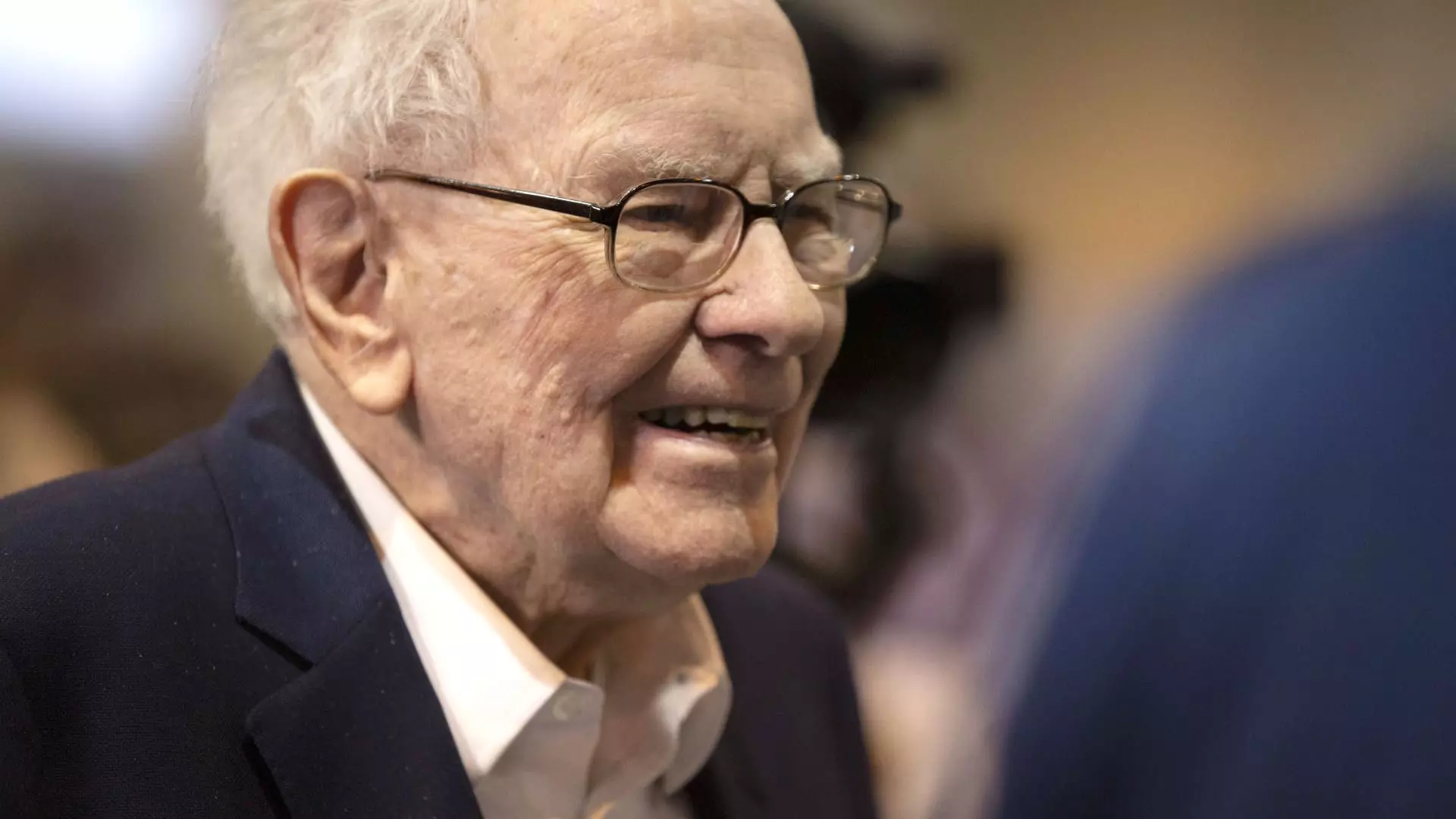Warren Buffett, the legendary CEO of Berkshire Hathaway, recently stirred discussions among investors by adopting a surprisingly cautious investment strategy. As the 94-year-old mogul sold significant portions of stocks and piled up cash reserves amounting to a staggering $334 billion, questions arose about his defensive posture in an otherwise thriving market. His annual letter to shareholders, which many awaited with great anticipation, yielded insights but left essential questions unanswered, prompting investors to reassess their expectations regarding Buffett’s investment philosophy.
Buffett clearly emphasized that even with Berkshire’s massive cash holdings, which some might interpret as a withdrawal from equity investments, his love for stocks remains intact. In his 2024 annual letter, he countered the notion of a retreat from the stock market by asserting that the majority of Berkshire’s capital continues to be invested in equities. “That preference won’t change,” he stated, reassuring shareholders of the company’s enduring commitment to equities. Yet, this apparent divergence between cash accumulation and equity investment raises eyebrows, particularly given the favorable trends in the broader market.
One interesting point is that while Berkshire appeared to retreat, interest rates were also poised to decline, theoretically making equities more attractive. The juxtaposition of Buffett’s historically risk-averse stance with current market developments suggests a nuanced strategy at play. After all, Buffet’s eventual clarity will determine whether his cash stockpile is a temporary shelter from perceived market risks or a strategic pivot toward future investments.
Sell-off Strategy and its Implications
Berkshire Hathaway’s recent activities highlight a significant sell-off, marking the ninth consecutive quarter of net equity sales. The company divested over $134 billion in stocks during 2024, including significant positions in its leading holdings like Apple and Bank of America. This trend reinforces the premise of Buffett executing a selective strategy where the quality of equity investments outweighs mere quantity.
Critics may argue that Buffett’s reluctance to re-enter stocks also reveals hesitations regarding current valuations. The backdrop of heightened market volatility, along with uncertainty stemming from changes in policy introduced by political leadership, might have prompted a more cautious approach. Additionally, the combination of a booming stock market—the S&P 500’s growth of over 20% over the last two years—coupled with a lack of compelling investment opportunities may explain why Buffett chose to sit on his hands instead of allocating resources aggressively.
Signals from the Leadership Transition
Another facet emerging from Buffett’s communication is the ongoing transition in leadership to Greg Abel. Buffett’s endorsement of Abel hints at a thoughtful handover of responsibilities while simultaneously preparing the company for future opportunities. This leadership dynamic could play a dual role: it maintains stability for investors as they witness a smooth transition while also preparing the next generation to capitalize on strategic investments.
Buffett’s remarks on his successor’s capabilities further reveal an understanding of the long-term trajectory of Berkshire Hathaway’s investment philosophy. By envisioning Abel as the future driver of equity investments, Buffett may be positioning the company for a more aggressive stance under Abel’s stewardship while affording himself the space to recalibrate investment strategies in tandem with market conditions.
Despite Buffett’s cautious stance toward U.S. equities, there is a visible inclination toward increasing stakes in Japan’s trading houses, which could signify a strategic diversification that contrasts with his usual focus on American equities. In his letter, Buffett expressed intentions to bolster these foreign investments gradually. This aligns with a growing trend among seasoned investors seeking opportunities in overlooked international markets amidst fluctuations in domestic market dynamics.
The underpinning concerns regarding the U.S. economy coupled with comments on unpredictable stock valuations suggest that Buffett is strategically choosing to explore less volatile investment avenues. By diversifying geographically, Buffett is potentially hedging against uncertain local economic forecasts while still preparing Berkshire for future growth amidst changing conditions.
The evolution of Buffett’s investment strategy signals a complex intersection of tradition and adaptation in a highly dynamic market landscape. As he balances cash accumulation with selective equity selling, Buffett reassures shareholders that the core of Berkshire Hathaway’s operational philosophy remains intact. However, the market will inevitably scrutinize the implications of this cautious approach. Will Buffett’s strategy prove wise in the long run, and will his successors continue his legacy? Only time will reveal the answers, but for now, Buffett’s choices serve as a reminder that even the most celebrated investors must navigate uncertainty with thoughtful caution.

